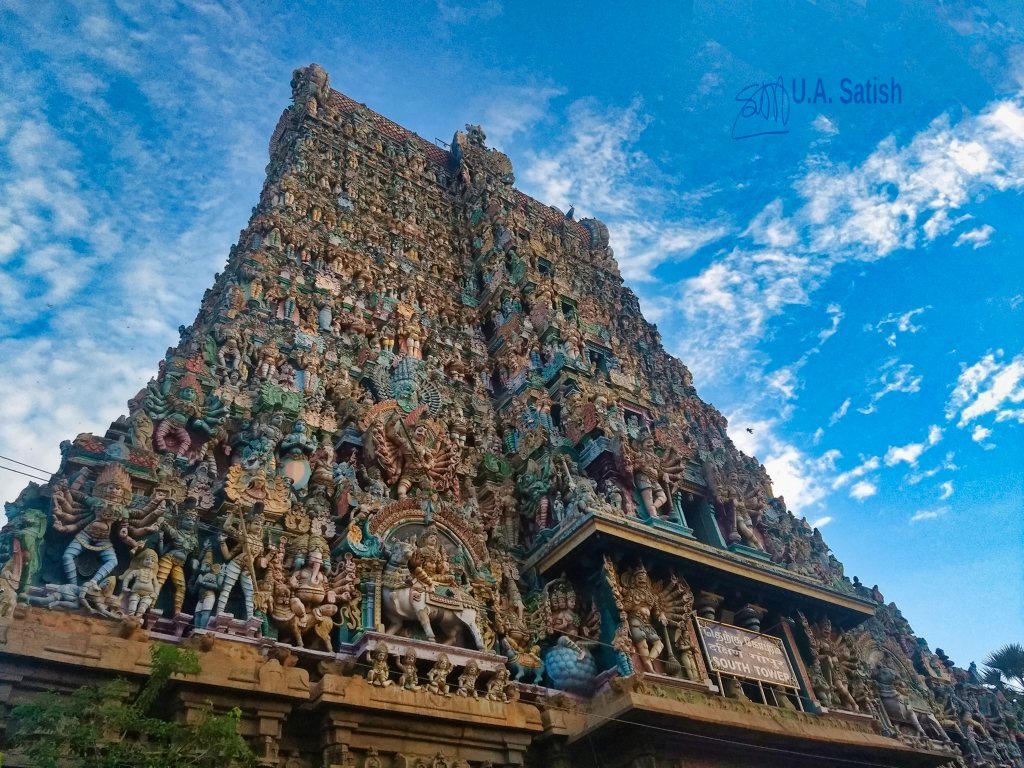
Meenakshi Amman Kovil in Madurai is a world-famous Hindu temple. It is in the centre of the historic city of Madurai. The main deities are Meenakshi Amman (an avatar of Parvati) and Sundaresvara (Siva). The temple is perhaps 1,400 years old.
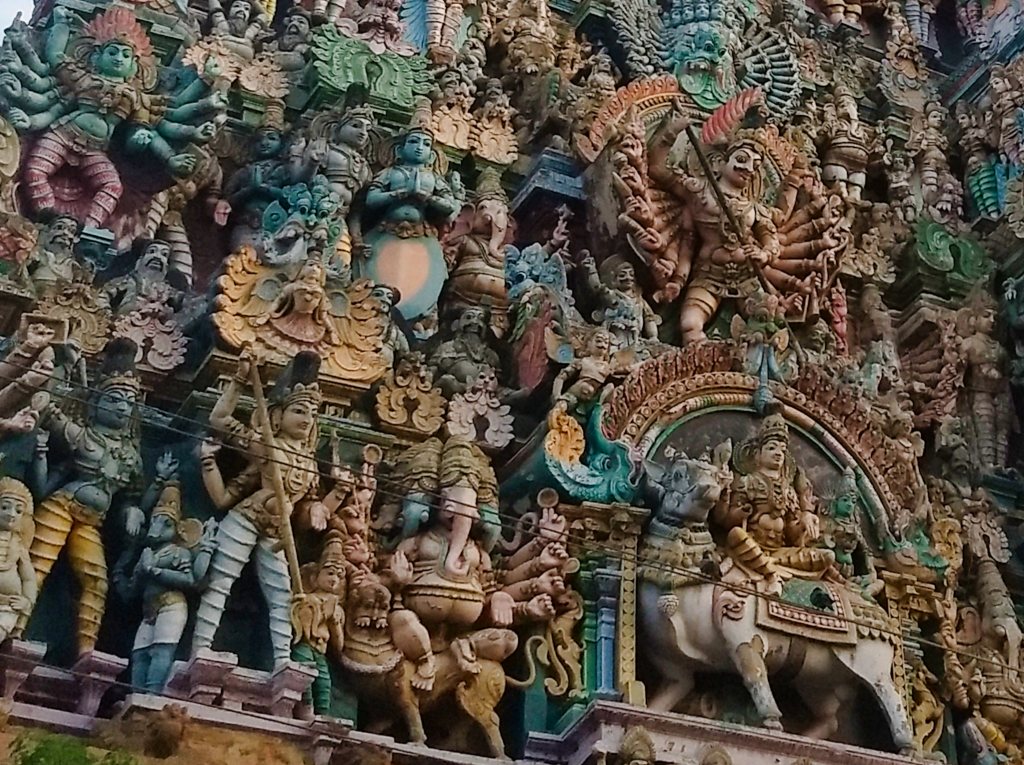
Architecture of Meenakshi Amman Kovil
The temple occupies a huge area of 14 acres (5.7 hectares). High walls surround the premises. Four massive gopurams or towers act as gateways to Meenakshi Amman Temple. The South Tower is the tallest at 170 ft and the inspiration for the Tamil Nadu state emblem. The gopurams flaunt many Dravidian sculptures which portray mythological events.
Inside the temple walls are fourteen more gopurams. Each of them is a multi-storey structure. Elaborate sculptures cover the exteriors. The smaller gopurams serve as gateways to many shrines. The main two shrines are dedicated to Meenakshi and Sundareswarar. Other shrines accommodate deities which include Ganesha and Murugan. The main idol of Meenakshi shows her holding a parrot, a symbol of Kamadeva.
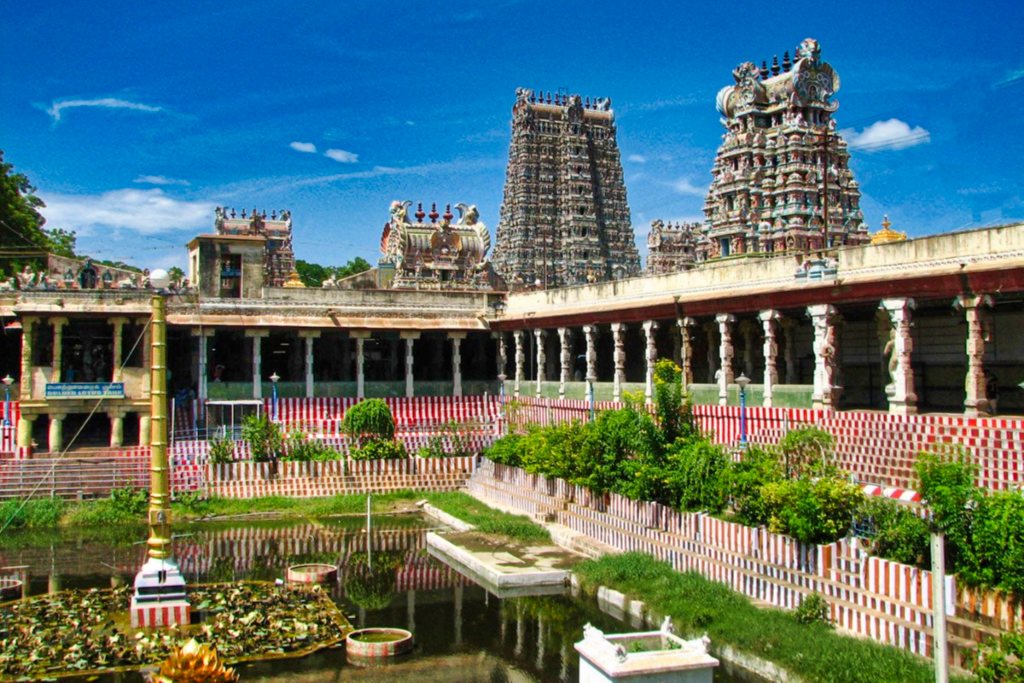
At the centre of the temple complex is the sacred Golden Lotus Pond or Porthamara Kulam. The pond has an area of one acre. Fish, frogs and other aquatic animals do not survive in waters of the pond.
The temple includes a number of large halls or mandapas. Many kings built the halls over time and they serve as resting places for devotees. Mandapas and gopurams are distinctive features of Dravidian temples.
The Shrines
The principal deities are Meenakshi and Sundaresvara . Both their shrines face east. The devotees typically visit Meenakshi before Sundareshwar as she is considered the primary deity of the complex. The sub-deities include Alagar, Mukkruni Vinayagar, Irattai Vinayagar, Dakshinamurthy, Mahalakshmi and Saraswathi.
Hall of Thousand Pillars
Largest of the mandapas is the Hall of Thousand Pillars (Aayiramkal Mandapam). The hall has 985 pillars. Beautiful sculptures adorn the pillars and walls. Ariyanatha Mudaliar built the mandapa in 1569. It is a blend of engineering skill and artistic vision. Each pillar is a masterpiece of Dravidian sculpture. Foremost among the carved figures are those of Shiva as a wandering mendicant (Bhikṣāṭanamūrti), Ganesha, Rati (chief consort of Kamadeva), Karthikeya and countless yalis (mythical creatures). The five musical pillars just outside the Aayiramkal Mandapam are remarkable. Each pillar generates a different musical note when struck.
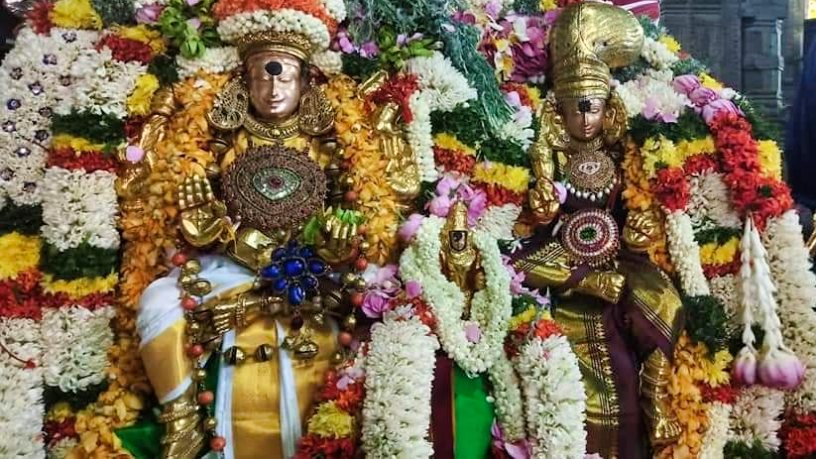
History of Meenakshi Amman Kovil
Pandyan kings built Madurai Meenakshi Amman temple. Malayadwaja Pandya and his queen Kanchanamala had a daughter Thataathagai alias Meenakshi who succeeded her father and reigned the kingdom successfully. The Madurai Meenakshi Amman temple was built after her.
Historians believe that Kulashekarar Pandyan of the Pandyan Dynasty built the temple in first century C.E. The kings who came after him continued to build on the temple.
In 14 century C.E, general Malik Kafur of Delhi Sultanate attacked the temple. He carried away gold, silver and other valuables to Delhi. Malik Kafur ransacked many Hindu temples in South India between 1309 to 1311 CE. He invaded Warangal in Andhra Pradesh in 1310. His ravaging army raided the Bhadrakali temple in Warangal and carted the invaluable Koh-i-Noor diamond to Delhi. In 1849, the diamond became a special possession of Queen Victoria. It subsequently turned into a part of the Crown Jewels, first in the crown of Queen Alexandra and then in the crown of Queen Mary.
Reign of The Nayaks
Between 1356 and 1378, Vijayanagara Empire expanded into the Tamil country. With the destruction of the Madurai Sultanate in 1377-78, most of the present day Tamil Nadu eventually came under the rule of the Vijayanagara Empire. The rule of the Vijayanagara kings was characterised by the restoration of religious freedom to the Hindu majority. They took control of Madurai and appointed the Nayaks as governors. The Nayaks rebuilt and reopened Meenakshi Amman Kovil. Vishwanatha Nayakar, a king of the Nayaka dynasty, undertook further work on the temple in late sixteenth and early seventeenth centuries. Thirumala Nayakar built a number of mandapams during his reign from 1623 to 1655.
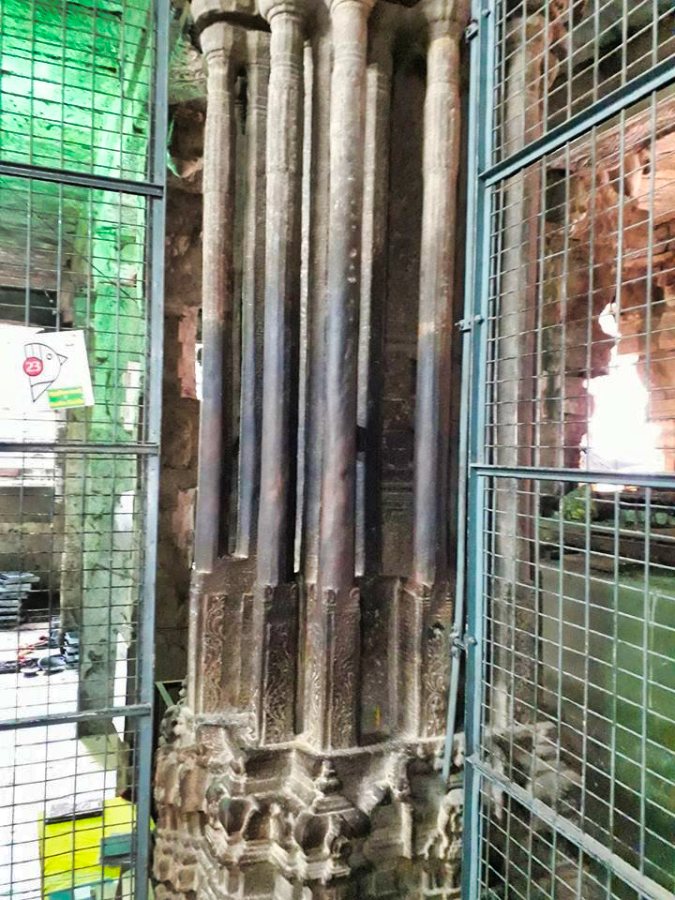
During British rule, the temple suffered from neglect. However Tamil Hindus began restoration work in 1959. The work was completed in 1995.
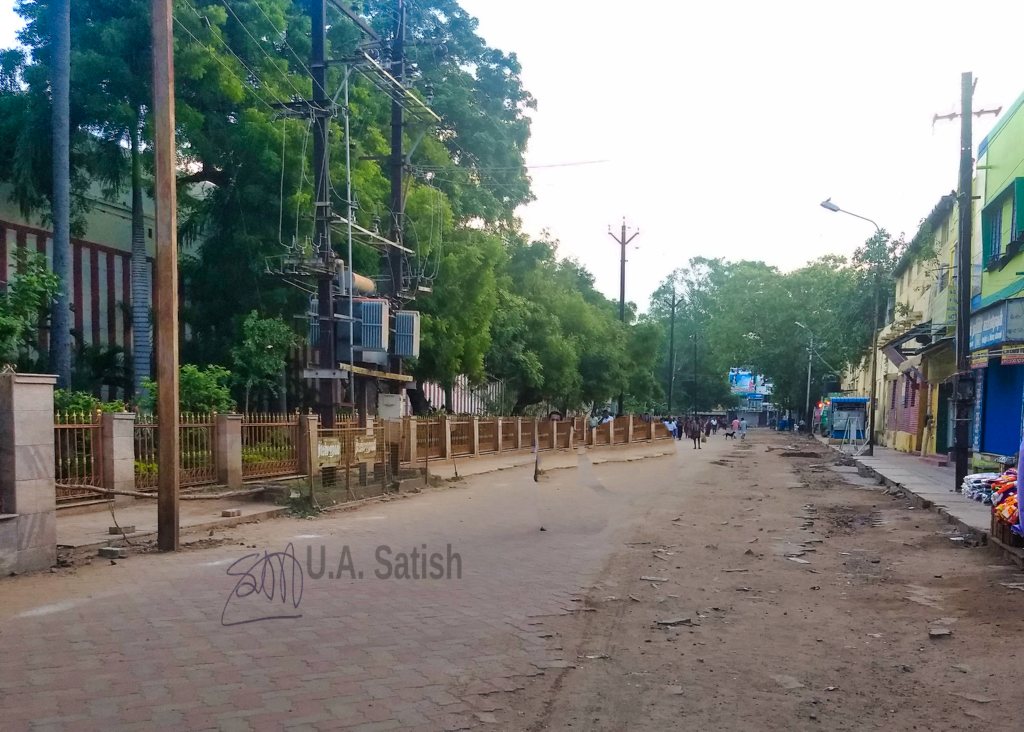
Pooja Timings
Daily pooja schedules are from 5:00 to 11:15 am and 4:30 to 10:00 pm. Palliarai Pooja is from 9:30 to 10:00 pm. In this special pooja, an idol of Sundareshwarar is carried on a palanquin to the shrine of Meenakshi. The idol is then brought back the next day morning.
Every devotee who visits the temple gets a laddu as prasadam.
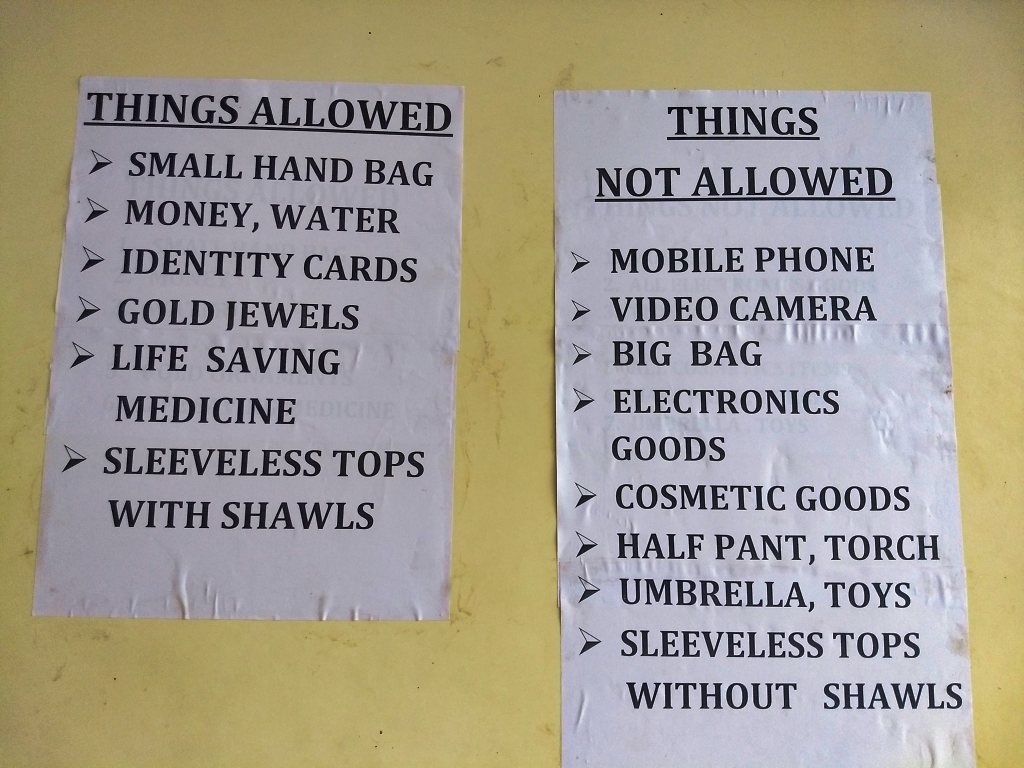
The temple strictly prohibits use of mobile phones and cameras inside the temple. Shorts, sleeveless tops and torches are not allowed. Devotees have to leave them behind in lockers for a nominal fee.
Getting There
The nearest Railway Station is Madurai Junction (MDU). It is 1.6 km via West Velli street. Madurai Airport (IXM) is a drive of 11.5 km (24 min). Chennai is 436 km (7 hr 32 min) to the south west by road.
If you liked the post, you could…
Join more than 5,000 fans of UASATISH by liking us on Facebook, or follow us on Twitter and Instagram.